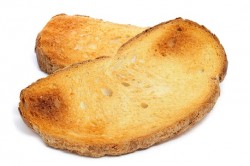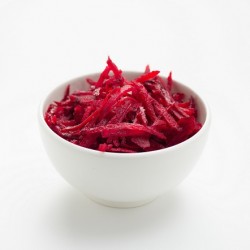With spring upon us, this is the time to reset our ability to burn fat.
Each season and its harvest has an important role in maintaining good health. Winter stores fat, proteins, vitamins and minerals to rebuild and insulate.
Spring, as illustrated by its low fat harvest and austere menu, naturally forces us to burn stored fat cells for energy. This triggers fat cell detoxification, which is a requirement for weight loss. But wait, the benefits of fat burning far outweigh our weight loss obsession.
Being a good fat burner does not depend on whether you are fat or skinny. We have lost our ability to burn fat as a culture, and that is a real problem. Let me explain why we all need to reset our fat burners.
The benefits of fat burning are huge and go way beyond weight loss!
- Fat is a calm fuel that burns slow and keeps the mood stable.
- Fat burning neutralizes the toxic acids that are caused by stress.
- Fat cells are where we store toxic heavy metals, fat soluble chemicals, pesticides, preservatives and environmental pollutants like estrogenic plastics. When we burn our fat cells, we continually detox.
- Fat burning stimulates lymph drainage.
- Fat is a long-lasting fuel that builds endurance, stamina and reduces cravings.
- Fat burning allows deep sleep through the night.
Tip 1: Grapefruit
Grapefruit is one of nature’s fat metabolizers. They are coming into season right now, so don’t miss them.
Remember the old grapefruit diets, where you ate nothing but grapefruits? That diet had merit but it was too extreme. I suggest eating just one or two a day. They are great for breakfast as a “fast breaking” food. Grapefruits support the momentum of burning fat that is established by having an early supper and no snacks through the night.
This effect will continue through the morning as the grapefruit forces a metabolism that burns fat, stabilizes energy and balances blood sugar. Add raw honey for best results (see why below).
Tip 2: Raw Honey
Honey is another natural fat metabolizer according to Ayurveda. Unlike most sweets that create highs and lows in blood sugar, honey, according to Ayurveda, supports energy and normalizes cravings by forcing fat metabolism and detox. This effect is due to the fact that honey is predominately fructose and burns slower than glucose.
It should be taken only in small quantities, and only by those with very stable and healthy blood sugar levels. For this to work, however, the honey must be raw, which means not cooked, not pasteurized and not heated. Raw honey also scrubs toxins (ama) off the intestinal wall and fat cells. If honey is heated for any length of time or cooked (such as in muffins, bread or desserts) it will not burn fat or detoxify toxic fat cells.
In fact, if cooked, the honey actually becomes ama, a toxic hardened material basically comprised of undigested food. In my book The 3-Season Diet, I tell the story about beekeepers that sprayed diluted honey on the hives to calm the bees before managing their hives. According to this report, when the beekeepers used cooked honey to spray the hives, all the bees where dead within 20 minutes. If raw honey was used, on the other hand, the bees were fine and docile.
Tip 3: Water
Water is a critical tool for encouraging better fat metabolism.
A study showed that drinking 500ml of water (a bit more than 16 ounces) increased thermogenesis (heat production) by 24 percent. (1) This increase of metabolic activity before a meal will support more efficient digestion and fat metabolism. In Ayurveda, it is recommended to drink one to two glasses of water 15-20 minutes before each meal.
The water allows the stomach to be hydrated so it is more willing to robustly produce the hydrochloric acid (HCL) needed to digest a big meal. HCL ensures that what enters the stomach is properly broken down and absorbed in the small intestine. If the stomach is dry or dehydrated, it won’t produce enough HCL for optimal digestion because that much-needed acid would end up burning the stomach lining.
Squeeze a little fresh lemon juice in your water before a meal for an extra fat burning boost (see why below).
Tip 4: Treat Gluten Intolerance, Rather Than Avoiding Gluten
High insulin levels caused by poor diet and eating habits tell the body to store fat. Low insulin levels are one of the major factors associated with weight loss. Breads are usually public enemies for losing weight because of the hard-to-digest gluten content and their impact on insulin levels. Many get results by avoiding breads and gluten altogether to lose weight. This strategy treats the symptoms of gluten intolerance, but it is essential to find out why the gluten is not digested in the first place. I have reported on this in detail in many of my newsletters. Good news! Some grains do have surprising benefits when it comes to weight loss. Sourdough and rye bread have been reported to balance insulin levels. (2) The sourdough culture helps to break down the hard-to-digest gluten protein. TIP: Toasting breads helps lower the impact of gluten on the digestive villi by making it easier to digest.
Tip 5: Salad Dressing Improves Digestion and Lowers Insulin
Taking vinegar before each meal helps support blood sugar and lower insulin levels, which typically spike after a high starch meal. (3)
The vinegar is a weak ascetic acid that fires up the digestive acids needed to break down a heavy starchy meal. The Italians often start each meal with balsamic vinegar. If you’re not a balsamic vinegar buff, just add more vinegar to your salad. If vinegar isn’t your thing, Ayurveda suggests a few simple recipes to increase HCL production in the stomach:
- Lemon juice does basically the same thing as vinegar and makes a perfect salad dressing with raw honey.
- Lemon juice can also be used alone, on food, or in some warm water that you sip with the meal.
- To really boost digestive strength, slice ginger root into dime-sized slices. Sprinkle the slices with natural salt (Himalayan, Redmond or Celtic salt) and fresh lemon juice. Eat two before each meal.
Tip 6: Green Tea
Drinking green tea with meals, as the Japanese and Chinese do, helps decrease the absorption of excess fat. (4) White, green and black teas regulate the enzyme lipase, which breaks down fat.
These teas have been shown to stimulate fat burning genes and aid in weight loss. (5) Antioxidants in white, green and black tea also neutralize the toxic chemistry of stress. When caffeine is taken with a meal, such as green tea, the caffeine acts as a digestive stimulant and may be beneficial for the efficiency of digestion.
Notably, the same caffeine on an empty stomach can be depleting to the adrenals and digestion.
Tip 7: Spices
A little spice with each meal can slow the absorption of white sugar and increase the amount of calories burned during each meal. (6) Peppers, ginger, turmeric, cayenne and digestive herbs like trikatu help support HCL production.
Tip 8: Sip Hot Water
Sipping hot water every 10-15 minutes all day for two weeks acts as a digestive cleanse and a lymphatic flush. This is one of the best techniques to treat dehydration, which is a major factor in weight gain. Dehydration triggers a survival response in the body that chemically tells the body to store fat.
Proper hydration supports the bicarbonate lining of the stomach that protects it from being burned by digestive acids. If the body is dehydrated, this water-based bicarbonate layer will dry out and the tummy can ache. If it isn’t treated quickly, the stomach will soon be told to make less digestive hydrochloric acid (HCL), which means that food will no longer being properly digested.
My favorite test for dehydration:
- Sip hot water every 10-15 minutes for just one day. If you are not craving and thirsting for more hot water by the end of the day, you are probably not dehydrated.
- If you are dehydrated, you will crave more because the hot water will hydrate, dilate and stimulate micro-circulation and lymphatic drainage. This will rehydrate the tissues as the body absorbs the water and you will get thirsty for more.
- If you are thirsty for more hot water after one day—continue for two weeks to totally rehydrate.
- Add a squeeze of lemon to spike the hot water every once in a while. The lemon acts like soap to scrub the tissue and the hot water becomes the cleansing rinse.
Tip 9: Improve Elimination
One of the most common reasons for weight gain is sluggish elimination. In a previous newsletter, I told the story about a patient who took 2 Triphala capsules after each meal for 2 years and lost 50 pounds. Triphala is an intestinal cleanser and toner that flushes toxins and excess mucus off the gut wall.
This helps assimilate nutrients properly. I also recommend that you increase fiber in your diet by eating more vegetables, fruits and whole grains. You can add 1 tablespoon of ground flax or chia seeds to each meal as a great way to fiber up. These seeds are also loaded with good omega-3 fatty acids which are needed to support weight loss and a stable nervous system.
Tip 10: Beets
Try eating one fresh beet a day for the next three months to help thin the bile and flush the liver and gallbladder.
Beets are best grated raw with lemon juice, but also have benefits when eaten cooked. When the bile flows, the digestive system can break down fat and neutralize digestive acids and the liver can remove toxic fat soluble chemicals.
Optimal bile flow may be the most important piece of the digestive puzzle when it comes to weight loss—so eat your beets!
Finally, I would be misleading you to not mention the two most powerful tools to reset fat burning.
First is exercise. I am a big fan of nasal breathing exercises, and I encourage you to learn more about it and start moving your body every day.
Second, eat three meals a day, and try to make lunch your biggest and relaxed meal of the day. Having longer periods of time between meals allows the body the time to get into fat burning mode.
I hope I’ve illustrated successfully why burning fat is more than a weight-loss technique. So don’t miss nature’s window of opportunity (spring) for teaching your body this amazing skill.
Love elephant and want to go steady?
Sign up for our (curated) daily and weekly newsletters!
Editor: Catherine Monkman
Photos: Author’s Own, Sunny Guddoo/Pixoto







Read 8 comments and reply